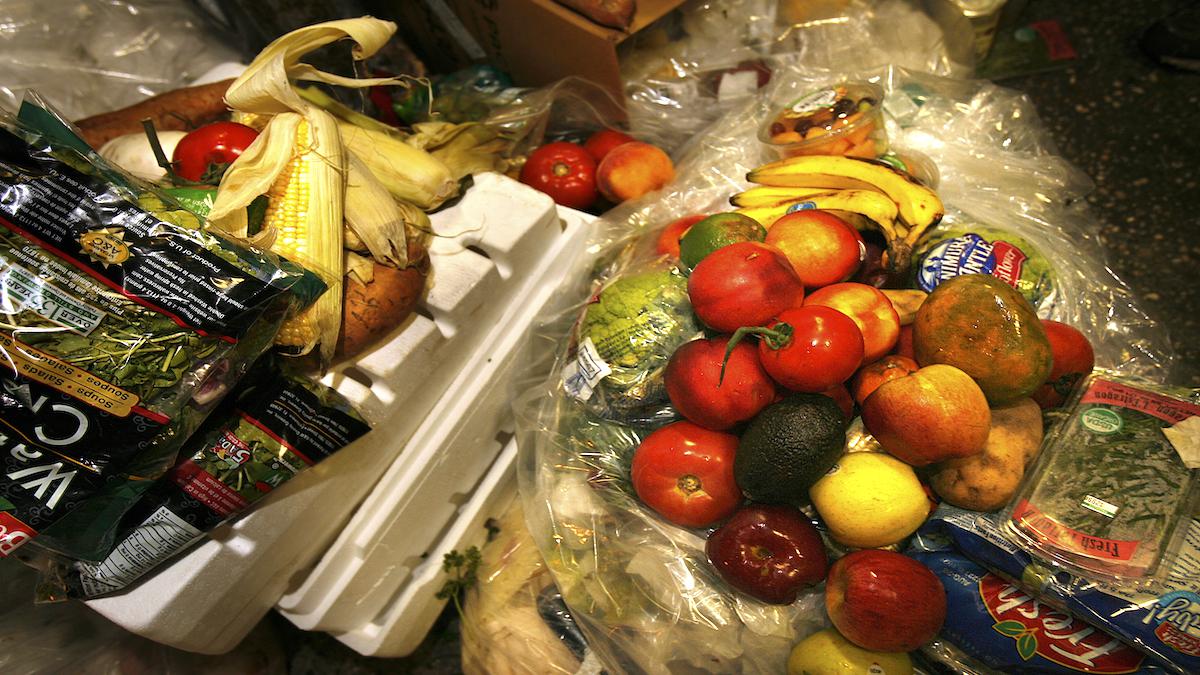

Food discarded by markets in a dumpster in New York City. Carolyn Cole / Los Angeles Times via Getty Images
In the U.S., more than one-third of food produced goes to waste. While these organic compounds may seem harmless to toss in a landfill, food makes up 22% of waste in landfills and emits greenhouse gases, namely methane, as it rots. For the first time, the U.S. Environmental Protection Agency (EPA) has released a report detailing just how much of an impact the country’s food waste has on climate change.
The report, From Farm to Kitchen: The Environmental Impacts of Food Waste, notes the environmental impacts of wasted food. In its entirety, the report focuses on land use, water use, energy use, application of fertilizers and pesticides, and emissions.
For example, one year’s worth of wasted food has the same amount of greenhouse gases as 42 coal-fired power plants — and that’s not counting the methane emissions generated after the food is discarded. The amount of water and energy that goes into producing one year’s amount of food waste could supply 50 million homes. The study also found that the amount of land used to produce food that is lost or wasted each year amounts to 140 million acres, roughly the size of all of California and New York.
“As the United States strives to meet the Paris Agreement targets to limit the increase in global temperature to 1.5 degrees above pre-industrial levels, changes to the food system are essential. Even if fossil fuel emissions were halted, current trends in the food system would prevent the achievement of this goal,” the report states. “Globally, food loss and waste represent 8 percent of anthropogenic greenhouse gas emissions (4.4 gigatons CO2e annually), offering an opportunity for meaningful reductions.”
The report acknowledges, too, that this food waste could instead go a long way in increasing food security for millions of people. Research shows that the amount of food wasted in the U.S. each year has enough calories to feed 150 million people annually. Currently, it’s estimated that about 38 million people in the U.S. face food insecurity each year.
“Food insecurity isn’t driven by scarcity, it’s a distribution issue,” Shannon Kenny, an author of the report and the senior advisor on Food Loss and Food Waste at the EPA, told Natural Resources Defense Council. “If we fed everyone in the country fully and there was no food insecurity, we would still have food waste. We need to start looking at an array of solutions — prevention solutions, not just rescue solutions.”
Despite pledging to cut food loss and waste in half by 2030, the U.S. is far from reaching its goal. As such, the EPA created the From Farm to Kitchen report in hopes of inspiring policies and individual change to minimize food waste.
This initial report will be followed by The Environmental Impacts of U.S. Food Waste: Part 2, which will focus more on different waste management options for food waste, such as composting, and their impacts on the environment.
- Total Amount of Global Food Waste Remains Unclear: UN Report ...
- COVID-19 Creates Food Waste Mountains That Harm the ...
- Can the U.S. Slash Food Waste in Half in the Next Ten Years ...
- The Fight Against Food Waste Starts at Home - EcoWatch

 233k
233k  41k
41k  Subscribe
Subscribe 